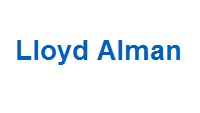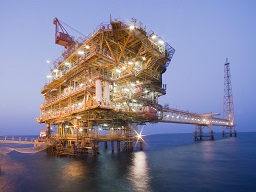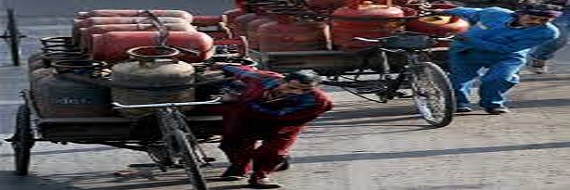Distribution Engineering Support
Lloyd Alman deliver engineering services to improve the performance of an organisation as well as an industry innovator, which allows international best practice to be implemented to assist in common operating methods where appropriate.
Policy and procedural development is based upon meeting the clients’ requirements and obligations for full compliance with legislation and regulatory requirements. The principles are based on the HS (G) 65 successful Health and Safety Management POPIMAR approach and the Policy Pyramid. The Policy Pyramid is a management structure of documents developed to provide an overall umbrella from a policy procedure to a guidance note.
In developing this process the documents and procedures developed will support conformance with relevant British (BSI), European (CEN) and international (e.g. ISO, ASME) standards, and reflect current international best practices and lessons learnt from operational experience.
Policy and Procedural Audit (Technical Audit)
The purpose of policy and procedural audit is to provide a management review of the effectiveness of the system, and to identify any non conformances within processes. The audit will identify strengths and weaknesses in the operation of the management system and policy and procedures.
Recommendations will be made to improve areas of weakness and identify areas where international best practice may be adopted to meet business requirements.
The principles for audit are based on the process adopted in HS(G) 56. Successful Health and Safety Management as part of the POPIMAR approach, auditing is an essential part of health and safety management systems.
The aims of the audit should be to establish:
- Appropriate management arrangements are in place
- Adequate risk control system exist, are implemented, and consistent with the hazard profile of the organisation
- Appropriate workplace precautions are in place
The process involves: –
- Collecting information about the particular policy and procedure
- Making judgements about adequacy and performance
Quality Assurance Inspections
Lloyd Alman have developed an approach for site audits/inspections for engineering and technical compliance with several UK Gas and Water clients. The approach is based upon the UK’s Health Safety Guidance (HS G65) Successful Health and Safety Management. It has been very successful and has seen significant benefits to clients.
Planning
Lloyd Alman approaches an audit by planning the activities in detail with the client to ensure they are carried out efficiently. The plan will typically involve a number of inspections in a local patch and then moving onto other areas. We will work closely with the client whilst planning work to ensure that our approaches are developed depending on an individual client’s requirements.
The Inspection
The overall objective of the inspection is to ensure that operational activities are being carried out safely and in compliance with policies and procedures. An essential element is good communication with the team and we pride ourselves in being able to achieve a high level of sign on and often welcome by the teams.
The inspection:
- Will be unannounced where possible
- The Inspector will be fully compliant with any PPE requirements for the activity being inspected, including additional precautions required with regards to cross-contamination
- An initial introduction and briefing will be carried out with the Team Leader (and other members of the team if necessary)
- The Team will be asked to talk through the job or in some cases continue with the activity being inspected
- The Inspector will make observations and ask questions of the team ensuring the inspection is optimised (i.e. as many questions as possible are checked)
- Coaching will be carried out wherever possible, e.g. talk through elements of the work procedures
- An inspection form (or hand held device) will be used to record details of the inspection
- The team will need to be interrupted for a short time in order for the Inspector to complete some final checks (e.g. PPE and equipment checks, underpinning knowledge questions, etc.)
- The Inspector will then talk through the inspection form with the team ensuring that wherever possible, positive feedback is given, but at the same time, ensuring that any non-compliance are fully communicated before leaving site
This approach adopted by Lloyd Alman has already shown positive results with other utilities in the UK.Lloyd alman has adopted the approach to ensure teams under audit learn through the process. LA’s audit / inspection team are typically welcomed on-site by the operatives, who have found the advice and knowledge of the inspectors helpful in ensuring work is undertaken safely and in accordance with the appropriate engineering procedures.
When working on assets that are to be buried upon construction, it is vital to ensure work is completed right first time. This is especially important where PE joints are concerned.LA’s approach ensures the following happens as a matter of course;
- Non conformances identified and recorded
- Non conformances discussed with operators
- Operators learn best practice through the process
- Management information sent monthly to management and line managers
- Reduction in future failures
- Efficiency improvements shared
- Health and Safety
- NRSWA non conformances identified
- General site safety and safe control of operations
Reporting
It is imperative that the right people receive details of the inspection in a timely manner, and with data which adds value and subsequently enables performance improvement. The first step in this is a Line Manager report at the end of the period operating in a Line Manager’s “patch”. This may cover between 4 and 10 teams and could be over a period of 2 days to 2 weeks.
Typically a Line Manager report will be sent at the end of every week. Again, this report will summarise any non-compliances requiring corrective action, but will also provide positive feedback. Again, Lloyd Alman has managed to generate a process, whereby Line Managers welcome the Inspectors and will often ring them up asking them “when are they due to come back in”.
Management Information must:
Be of high quality
- Be designed such that performance improvement can be monitored over time
- Be able to separate key safety critical issues from those that are less important
- Have an associated database to enable an audit trail and ease the reporting
- Provide information to all levels in the organisation
Lloyd Alman has significant experience in developing high quality usable management information. Typically this is presented in both graphical and tabular format, which is easy to understand and capable of driving decisions to aid performance improvement.
Crucial to the audit process is the capture of accurate, quality and timely information to ensure that all parties learn from the findings on site and move towards a right first time approach to working. It is important that information captured from site is accurate and reflects the issues identified.
Once data is captured it is stored in a suitable manner with the ability to report clearly and concisely to the client. It is important that all performance, compliance and non compliances are captured. From this information and over time, performance trends are developed and reported to the client.
Technical Due Diligence
Typical Objectives:
To provide an independent technical due diligence of an asset considered for sale or purchase or possibly compliance ‘health check’.
To provide sufficient technical certainty to enable potential buyers to obtain purchase finance.
Typical Scope of Services:
Lloyd Alman will meet with the client to understand and define their requirements and enable a detailed project scope to be developed. As part of this process, Lloyd Alman will work with the Client to define the asset under investigation.
This will include:
- The physical system
- Gas supply and demand – the market, and growth potential
- People and processes – operational efficiency benchmarks
- Legislation and regulation
The next stage will be to undertake performance assessment to identify risks/liabilities and the opportunities.
This will include analysis:
- Legislation and regulation
- Asset integrity, serviceability, reliability, safety
- Market trends and growth
- System management benchmarking
The risks and liabilities will be quantified and mitigations identified. Additionally, the opportunities for growth or operational improvement will be quantified.
Risk Assessment – Undertake a generic risk assessment in order to target the key technical processes and information that supports the business.
Process Mapping – Map key technical processes that support:
- Compliance with legislation/regulation required to maintain operating license
- Asset integrity and processes are sufficient so as not to adversely affect safety
- Asset integrity and processes are sufficient so as not to adversely affect security of gas supply
- Future CAPEX and OPEX performance
Targeted Analyses – Undertake targeted analyses in order to review technical performance against metrics.
Verification – Verify that identified key process data and information is robust and reliable.
Typical Areas of Examination:
- Technical Requirements – Legislation, regulation, external and internal standards;
- Organisation – Structure, communications, competence, contractors;
- Financial Models – Growth, CAPEX, OPEX, REPEX;
- Asset Lifecycle – Planning, design, construction, operations, maintenance;
- Asset Condition – Inspection, serviceability;
- System Operations – Network analysis, models, forecasting, balancing, gas purchasing, measurement, storage;
- System Elements – Pipelines, city gate installations, district governors, LNG facilities, gas storage, metering, distribution mains, gas services, electrical and instrumentation;
- Records – Maintenance, asset location;
- Emergency Management – Incidents, gas escapes, cessation of supply;
- Materials – Purchasing, specifications, stores;
- Health, Safety and Environment – Performance monitoring, compliance;
- Quality – Control, assurance processes, audit.
Deliverables:
At the conclusion of the technical due diligence the following may be provided:
- A report, in pdf format with accompanying hard copy, providing an independent technical due diligence of an asset considered for sale or purchase that provides sufficient technical certainty to enable potential buyers to obtain purchase finance. Normally this would be in English.A formal presentation of the report.
- Interim reports and feedback may also be provided upon request.


